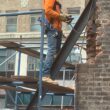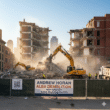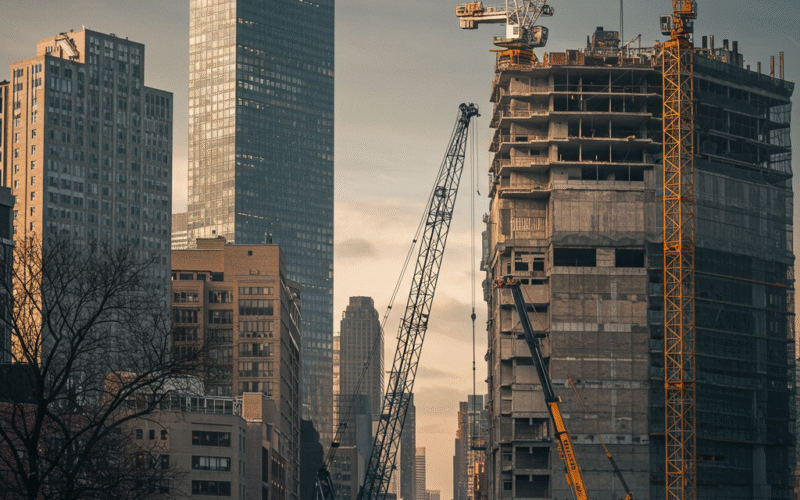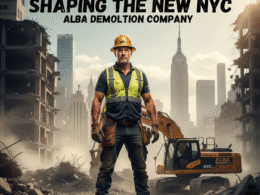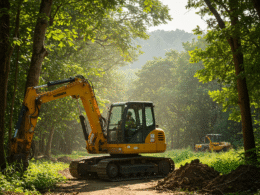Demolishing a residential property in New York City is a complex undertaking, far more involved than simply knocking down walls. It requires meticulous planning, adherence to strict regulations, and skilled execution to ensure safety, environmental compliance, and a smooth transition to your next project. If you’re considering a residential demolition in the Big Apple, here’s a comprehensive guide to what you can expect, highlighting the critical steps and considerations.
1. Initial Assessment and Planning: The Foundation of Success
Before any physical work begins, a thorough assessment and planning phase is crucial. This is where your demolition contractor, like Alba Services, will play a vital role.
- Site Inspection and Structural Analysis: The contractor will conduct a detailed inspection of the property, assessing its structural integrity, age, size, and proximity to neighboring buildings. This helps determine the most appropriate demolition method and identify potential challenges.
- Hazardous Material Survey: This is a non-negotiable step in NYC. Buildings, especially older ones, often contain hazardous materials such as:
- Asbestos: Found in insulation, flooring, roofing, and many other building materials, asbestos requires specialized testing and abatement by licensed professionals. It’s a significant health risk if disturbed improperly.
- Lead-Based Paint: Common in homes built before 1978, lead paint also needs careful handling and removal or encapsulation to prevent lead dust exposure.
- Mold, PCBs, and other contaminants: Depending on the building’s history, other hazardous materials might be present and require remediation.
- Utility Disconnection: All utilities (electricity, gas, water, sewer, communication lines) must be safely disconnected and capped off by licensed professionals before demolition commences. This is a critical safety measure.
- Project Scope and Method Selection: Based on the assessment, your contractor will outline the scope of work – whether it’s a full tear-down, interior gutting, or selective demolition – and the most suitable methods (e.g., mechanical, manual, or a combination).
- Neighbor Notification: As a courtesy and often a requirement, neighboring property owners and tenants must be notified about the upcoming demolition, including expected timelines and potential impacts like noise or dust.
2. Permitting and Regulatory Compliance: Navigating NYC’s Bureaucracy
New York City has some of the strictest demolition regulations in the country. Obtaining the necessary permits is a lengthy but essential process. Your demolition contractor will typically handle this, but it’s good to understand what’s involved:
- NYC Department of Buildings (DOB) Demolition Permit: This is the primary permit required for any demolition work. It involves submitting detailed plans, structural assessments, and proof of hazardous material abatement.
- NYC Department of Environmental Protection (DEP) Approvals: Especially concerning asbestos, the DEP requires specific notifications and approvals (like the ACP7 Asbestos Project Notification Form) before any abatement or demolition can proceed.
- Site Safety Plan: A comprehensive site-specific safety plan, outlining all safety measures, equipment, and emergency procedures, must be submitted and approved by the DOB.
- Shoring Plans (if applicable): If the demolition impacts or is adjacent to other structures, detailed shoring plans to protect those properties will be required.
- Other Permits: Depending on the specifics, additional permits for things like sidewalk sheds, street closures, or special waste disposal might be necessary.
Expect this phase to take time. The permitting process can range from weeks to several months, depending on the complexity of the project and the responsiveness of city agencies.
3. Site Preparation and Safety Measures: Securing the Zone
Once permits are secured, the site will be prepared for demolition. Safety is the utmost priority at every stage.
- Site Securing: Fencing and barricades will be erected around the property to prevent unauthorized access and protect the public.
- Sidewalk Sheds: For taller structures or those impacting public walkways, sidewalk sheds are mandatory to protect pedestrians from falling debris.
- Dust and Noise Control: Measures like water spraying, dust curtains, and specialized equipment will be used to minimize dust and noise pollution, particularly in densely populated NYC.
- Erosion and Sediment Control: Plans will be in place to prevent soil erosion and sediment runoff, especially if excavation is involved.
- Protection of Adjacent Properties: If the demolition is close to other buildings, special precautions like bracing, monitoring, and temporary protection will be implemented to safeguard their structural integrity. Vibration monitoring is often employed to detect any excessive vibrations that could impact neighboring structures.
4. The Demolition Process: Controlled Deconstruction
This is the highly visible phase where the building comes down. The exact approach will depend on the type of structure, the method chosen, and site constraints.
- Hazardous Material Abatement (if not completed prior): If hazardous materials were identified, specialized teams will perform their removal following strict protocols before general demolition begins.
- Selective Demolition/Interior Gutting: For renovations, this involves the careful removal of specific interior components (walls, flooring, non-load-bearing elements) while preserving the main structure.
- Full Building Demolition:
- Top-Down or Implosion (rare for residential in NYC): Most residential demolitions are done systematically, often from top to bottom, using mechanical equipment. Implosions are almost never used for residential buildings in NYC due to safety concerns and tight urban spaces.
- Mechanical Demolition: Excavators with hydraulic attachments (pulverizers, shears) are commonly used to dismantle structures.
- Debris Management: As the building comes down, debris will be separated on-site as much as possible for recycling. This includes concrete, metal, wood, and other materials.
5. Debris Removal and Site Cleanup: Clearing the Way
Once the structure is down, the focus shifts to clearing the site.
- Waste Segregation and Recycling: Demolition debris is carefully segregated into different waste streams (e.g., concrete, brick, metal, wood, mixed waste). Responsible demolition contractors prioritize recycling as much material as possible to reduce landfill waste.
- Hauling and Disposal: Specialized trucks will transport the sorted debris to approved recycling facilities or landfills.
- Foundation Removal: If a new structure is planned, the existing foundation will also be excavated and removed.
- Final Site Grading and Preparation: The site will be cleared of all debris and graded to prepare it for future construction or landscaping, ensuring it’s level and stable.
6. Post-Demolition Review and Sign-Off: Project Completion
- Final Inspection: The demolition contractor will conduct a final inspection to ensure the site is clean, safe, and ready for the next phase of development.
- DOB Sign-Off: The NYC Department of Buildings will perform a final inspection and issue a certificate of completion for the demolition work, confirming all regulations have been met.
Key Considerations for Residential Demolition in NYC:
- Timeline: A residential demolition project in NYC, from initial assessment to final sign-off, can take anywhere from a few weeks for a small, straightforward project to several months for larger or more complex ones, especially factoring in permitting and hazardous material abatement.
- Cost: The cost of residential demolition in NYC varies significantly based on factors like:
- Size and type of structure: Larger homes or those with complex structures will cost more.
- Presence of hazardous materials: Abatement of asbestos or lead paint adds considerable cost and time.
- Location and access: Tight urban spaces or difficult access can increase costs.
- Foundation removal: Whether the foundation needs to be removed.
- Debris disposal: The volume and type of debris.
- Permit fees: NYC permit fees can be substantial.
- Expect costs to range from roughly $10,000 to $50,000+ for a full house demolition in NYC, not including extensive hazardous material abatement which can add tens of thousands more. (These are rough estimates; always get a detailed quote.)
- Choosing the Right Contractor: This is perhaps the most critical decision. Look for a demolition company with:
- Extensive experience in NYC residential demolition.
- Proper licensing and insurance.
- A strong safety record and comprehensive safety protocols.
- Expertise in hazardous material abatement.
- A commitment to sustainable practices and recycling.
- Excellent communication and project management skills.
- Reputable references and positive reviews.
By understanding these steps and considerations, you can approach your residential demolition project in NYC with confidence, ensuring a safe, compliant, and efficient process from start to finish. Partnering with an experienced and reputable firm like Alba Services will be instrumental in navigating these complexities and achieving your project goals.

